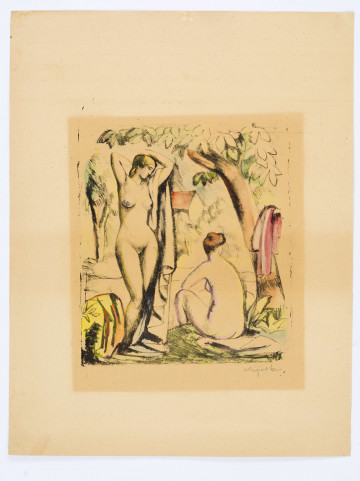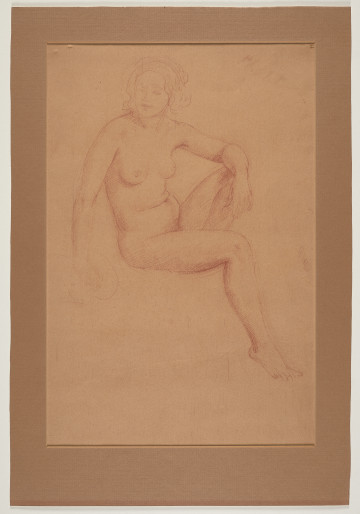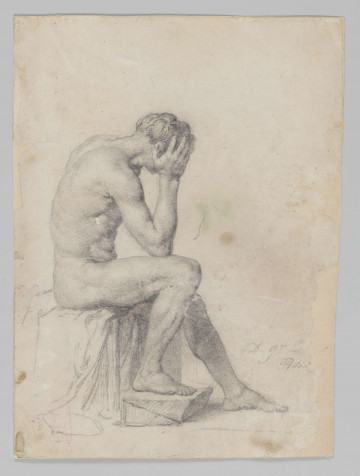
Bathers
1920s
National Museum in Lublin
Part of the collection: European classics of modernity
The construction of Jacek Malczewski's painterly soul has been discussed many times, especially in his most monumental and symbolic canvases. It was to be revealed above all in the programme painting Melancholia [Melancholy] (1894), which combined an artistic motif taken from Gustave Courbet with Polish patriotic iconography. The treatise on the need for the political involvement of art - or the inability of the Polish artist to free himself from the torments of national bondage - had the strongest impact on the perception of Malczewski's output. Another type of representation, appearing with increasing frequency from the turn of the century, were paintings that foregrounded auto-thematic topics, in which the patriotic element lay only in a metaphorical aura that could only be resolved through knowledge of earlier works. The Szczecin painting, created in the special year of the fulfilment of Polish aspirations for freedom, is one such work. Its main protagonist is the artist himself, shown on the axis of an almost altar-like composition. Although the greenish jacket may evoke military associations, this garment rather connotes the painter's work uniform - a proud artist, looking straight into the viewer's face, and touching the bottom edge of the painting with a spatula in his hand. The meaningful gesture emphasises the illusory nature of the scene and unambiguously identifies the portrayed with the author: the painted Malczewski, pointing to the frame of his work, clearly separates it from the real external world - this is his soul. The central figure is antithetically framed by two female nudes sitting on the well's basin. This motif, common in Malczewski's works, seems to emphasise the main message of the work. The role of female companions should be seen in relation to Arnold Böcklin, whom Malczewski admired. His eponymous Malarstwo i Poezja [Painting and Poetry] (from a painting created in 1882) took the form of naked women flanking a source of inspiration. The intrusive haptic nature of the nudes in the Szczecin representation, together with numerous purely formal compositional procedures, builds an atmosphere of eroticism, indicating the Young Poland connection between creative creation and life vitality. This is what now occupies the soul of Malczewski, who in the last decade of his life most frequently produced self-portraits.
Szymon Piotr Kubiak
Author / creator
Dimensions
cały obiekt: height: 118 cm, width: 150 cm
Object type
painting
Creation time / dating
Creation / finding place
Identification number
Location / status

1920s
National Museum in Lublin

1920 — 1929
Museum of the history of Polish Jews

National Museum in Lublin
DISCOVER this TOPIC
Castle Museum in Łańcut
DISCOVER this PATH
Educational path